Engaging Kids Chores; Cleaning Games and Advice
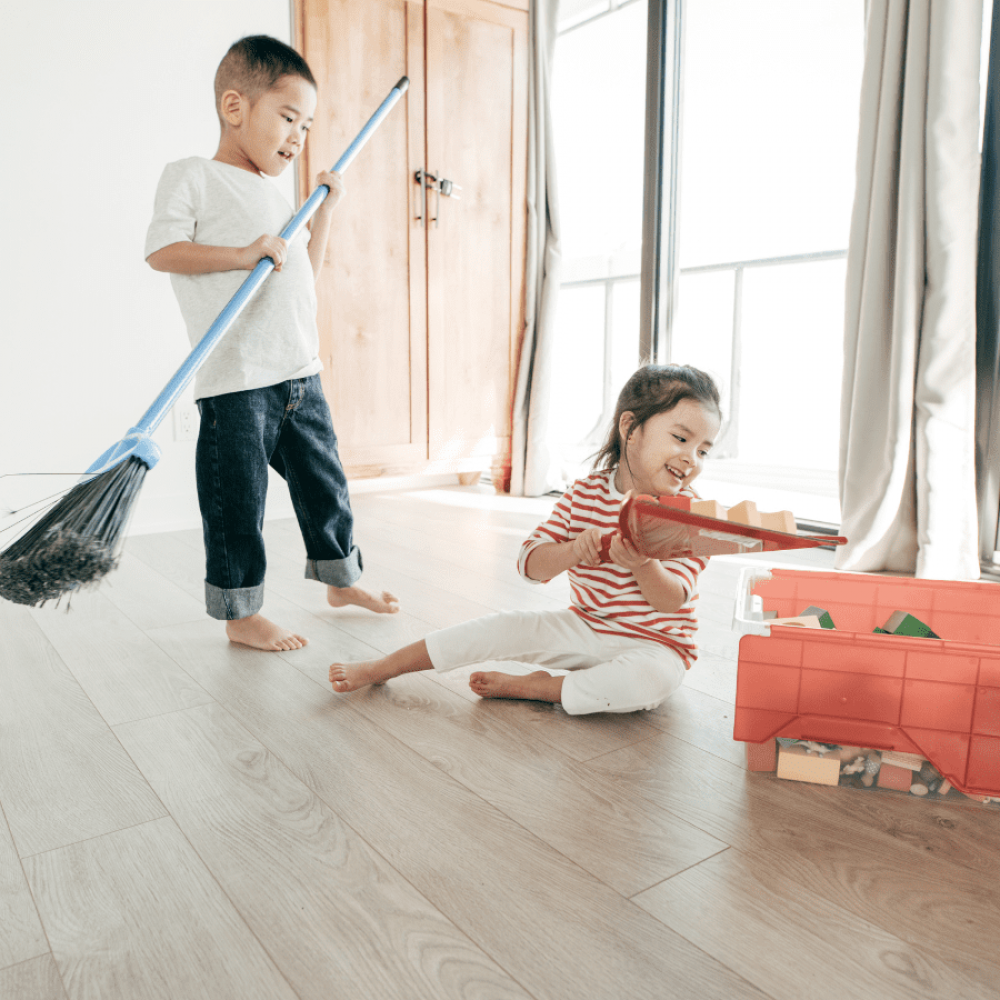
Key Highlights
- Engaging kids in household chores can be made easier with the use of chore charts and establishing a morning and daily routine.
- Including children in cleaning tasks not only teaches them responsibility but also instills a sense of pride and accomplishment.
- Age-appropriate chores for kids can range from simple tasks like putting away toys to more complex tasks like doing laundry and cleaning windows.
- Talking to kids about cleaning can be made more effective by explaining the value of cleanliness and the importance of keeping their surroundings tidy.
- Rewarding children for their efforts in cleaning can motivate them and create a positive association with chores.
- Creative chore charts for kids, such as printable checklists and dry erase charts, can make cleaning more fun and interactive.
- DIY chore chart ideas can include using colorful magnets, pictures, or stickers to track completed tasks.
- Printable chore charts can help keep kids organized and accountable for their cleaning responsibilities.
- Fun cleaning games, like the cleaning race or chore bingo, can motivate kids to complete their chores in a playful and competitive way.
- Integrating cleaning into daily routines can make it a habit and ensure that cleaning tasks are consistently completed.
- Establishing a cleaning schedule that works for everyone in the family can help distribute chores evenly and ensure that they get done regularly.
- Making cleaning a family activity can foster a sense of teamwork and create a positive atmosphere around cleaning.
- Addressing common cleaning challenges, such as resistance from kids and keeping them motivated over time, can be overcome with patience, consistency, and creativity.
Introduction
Keeping a clean and organized home is important for the well-being and comfort of the entire family. However, getting kids to participate in household chores and cleaning tasks can sometimes be a challenge. That’s where creative chore charts and cleaning charts for kids can come in handy. By engaging kids in cleaning and providing them with a clear structure and routine, parents can make chores more enjoyable and teach valuable life skills. To help you get started, google printable cleaning checklist specifically designed for kids’ rooms. These checklist will become your best friend as you work towards a cleaner and more organized home.
In this blog, we will explore different ways to engage kids in household chores, the importance of including children in cleaning tasks, age-appropriate chores for kids, tips for talking to kids about cleaning, rewarding children for their efforts, creative chore charts for kids, fun cleaning games to motivate kids, integrating cleaning into daily routines, and addressing common cleaning challenges. With these strategies and ideas, parents can make cleaning a fun and collaborative activity for the whole family.
Engaging Kids in Household Chores
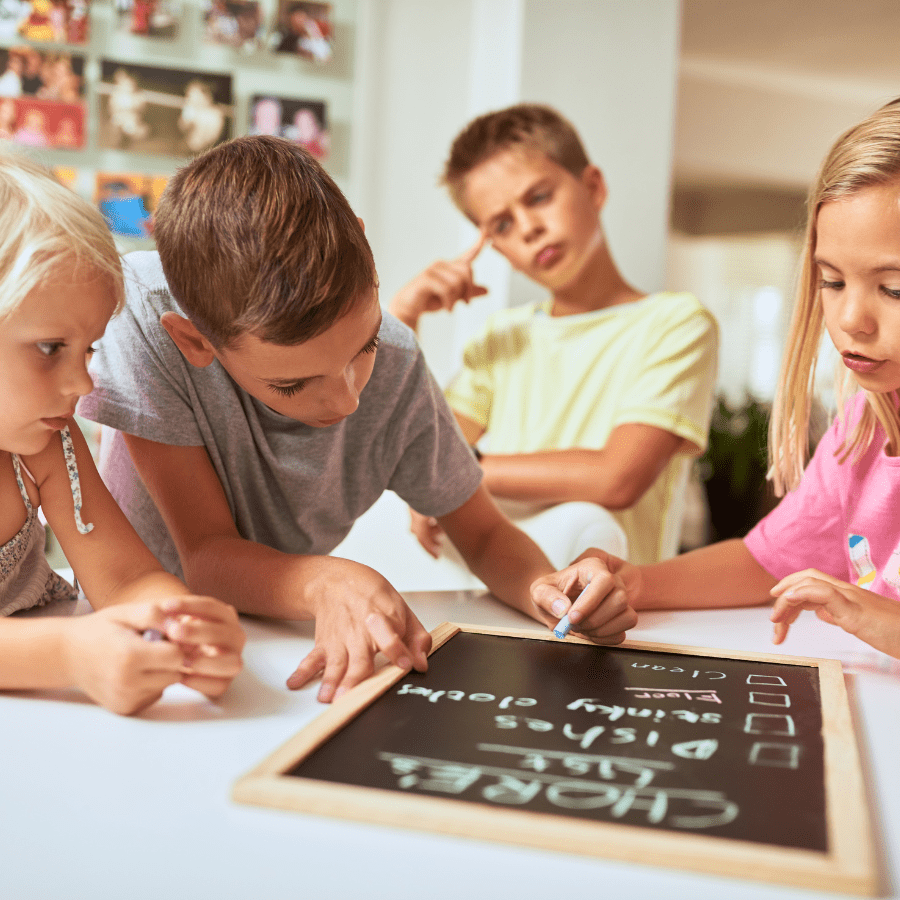
Engaging kids in household chores can be made easier with the use of chore charts and establishing a morning routine. Chore charts provide a visual representation of tasks that need to be completed, making it easier for kids to understand their responsibilities. By incorporating cleaning tasks into a morning routine, kids learn to develop good habits and take ownership of their living space. This not only teaches them responsibility but also instills a sense of pride and accomplishment.
The Importance of Including Children in Cleaning Tasks
Including children in cleaning tasks is important for several reasons. Firstly, it teaches them important life skills and responsibilities that they will carry into adulthood, including social skills such as teamwork and cooperation. By involving them in the cleaning process, they learn the value of hard work and taking care of their surroundings. Secondly, it instills a sense of ownership and pride in their living space. The University of Minnesota published a study describing the invaluable impacts teaching young kids to clean has such as, self-reliance, responsibility, and self-worth. When children are responsible for cleaning and maintaining their own rooms or common areas, they develop a sense of accomplishment and satisfaction. Lastly, involving children in cleaning tasks promotes a sense of teamwork and cooperation within the family, as everyone contributes to keeping the house clean and tidy.
Age-Appropriate Chores for Kids

Assigning age-appropriate chores for kids is essential to ensure their success and safety while completing tasks. Younger children, between the ages of 2-3, can be assigned simple tasks such as putting away toys, throwing away trash, wiping spills, and putting dirty clothes in the laundry hamper. Kids at this age could also benefit from cleaning toys, this gives them a set of tools sized just right for them! As children grow older, between the ages of 4-5, they can handle more complex tasks like wiping down bathroom sinks, helping with loading or unloading the dishwasher, and making their beds. Between the ages of 6-9, kids can start vacuuming or sweeping the floor, sorting and folding their laundry, organizing books and games, cleaning windows and mirrors, and helping with cleaning up after meals. For children aged 10 and above, tasks can include washing and drying laundry, emptying trash bins, cleaning the bathroom, washing bed sheets and blankets, and cleaning off shower scum.
Tips for Talking to Kids About Cleaning
Explaining the importance of cleanliness to children can be made fun and educational. Start by involving them in the process, explaining how a clean environment benefits everyone. Use positive reinforcement to motivate them, such as setting rewards for completing tasks. Emphasize teamwork and responsibility, showing how their contribution helps the family. Encourage questions and be patient in teaching them the value of maintaining a tidy space. By fostering a positive attitude towards cleaning, children can develop important life skills and habits.
How to Explain the Value of Cleanliness to Children
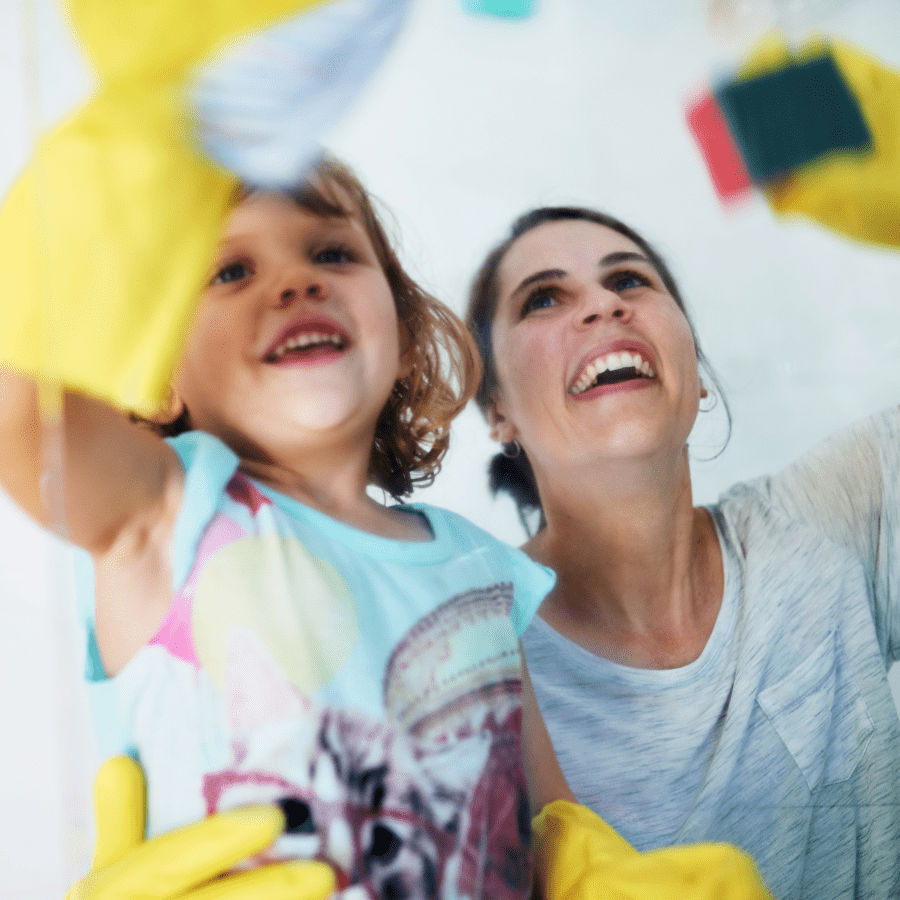
Engaging children in cleaning tasks is an opportunity to instill lifelong skills. To explain the value of cleanliness, relate it to their well-being and pride in a tidy space. Introduce the concept that cleanliness prevents germs and fosters a pleasant environment. Use relatable examples like finding toys easily in a tidy room. Reinforce positive behavior by acknowledging their efforts and offering simple rewards. Encouraging kids to participate in cleaning nurtures responsibility and contributes to a harmonious household.
Rewarding Children for Their Efforts in Cleaning
Rewarding children for their efforts in cleaning can be a great way to motivate them. Consider creating a reward system where completing chores earns them points towards a special treat or privilege. Praise and positive reinforcement are also effective tools to encourage children to participate in household tasks willingly. By acknowledging and appreciating their contributions, you reinforce the value of responsibility and teamwork. Making cleaning a positive experience for kids will instill good habits and a sense of accomplishment in them.
Creative Chore Charts for Kids
Encouraging kids to participate in household chores can be exciting with creative chore charts. DIY chore charts like a colorful calendar or a themed checklist can make cleaning engaging for children. Additionally, printable chore charts with fun designs or stickers enhance motivation. Etsy has a plethora of these charts created by designers that are easy, engaging, and simple to personalize. These charts not only establish routine but also instill a sense of responsibility in kids. Keeping chores visually organized through charts fosters a sense of accomplishment and progress, making cleaning tasks more enjoyable for young ones.
DIY Chore Chart Ideas
Encouraging children to participate in household chores can be simplified with fun and creative DIY chore chart ideas. Consider using colorful printables or a whiteboard to make chore assignments visible and engaging. Personalizing the charts with each child’s name and preferred colors can add a sense of ownership to their responsibilities. Another idea is to involve kids in creating the charts themselves, using materials like dry erase markers to make them reusable and customizable. These visual aids serve as helpful reminders and motivators for kids to complete their tasks efficiently.
Fun Cleaning Games to Motivate Kids
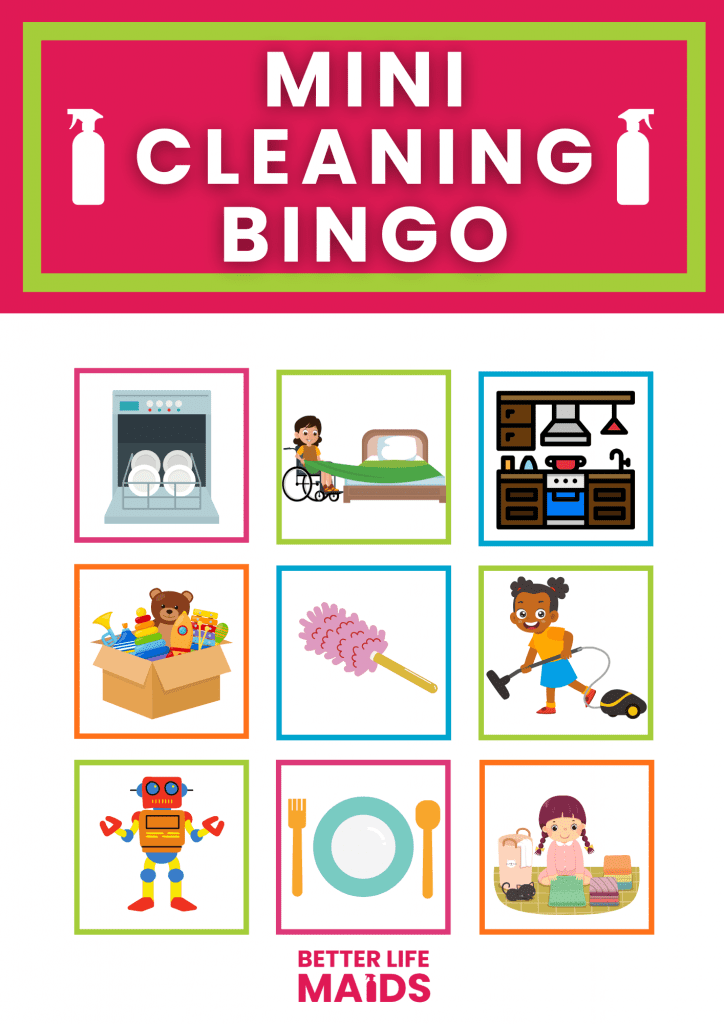
Getting kids excited about cleaning can be challenging, but incorporating fun games can make the process enjoyable. Try “The Cleaning Race” where kids compete to finish chores first. Another engaging game is “Chore Bingo,” turning tasks into a rewarding game. These activities not only motivate kids but also teach responsibility and teamwork. By infusing cleaning tasks with elements of play, children are more likely to actively participate and take pride in a job well done.
The Cleaning Race: Making Chores Competitive
Challenge your kids to the cleaning race! Transform mundane chores into a fun competition. Set a timer and see who can tidy their area the fastest. Adding a hint of rivalry can motivate kids to clean with enthusiasm. One example would be giving each kid a broom and seeing who can gather the most debris off the ground in a set period of time. Turn cleaning into a game and watch as their competitive spirits drive them to complete tasks swiftly and efficiently. Make chores exciting by introducing friendly competition and enjoy a cleaner environment along with playful family bonding.
Chore Bingo: Turning Tasks into a Game
Chore Bingo is a creative way to transform mundane tasks into an enjoyable game for kids. By creating a Bingo card with various chores like making the bed or setting the table, children can mark off completed tasks and aim for a Bingo. This not only adds a fun element to chores but also teaches responsibility and task completion. Kids will eagerly participate in household cleaning when it feels like a game rather than a chore. Transforming tasks into a game fosters a positive attitude towards cleaning. We have designed a version of Chore Bingo for you to play at home with up to 4 kiddos. Follow this link to view and print for free.
Integrating Cleaning into Daily Routines
When it comes to integrating cleaning into daily routines, consistency is key. Establishing a set cleaning schedule that aligns with your family’s activities can make a significant difference. Consider assigning specific tasks for each day of the week, such as laundry on Mondays or vacuuming on Fridays, to make cleaning a regular part of your daily and weekly routine. By making cleaning a regular part of your daily and weekly routine, it becomes more manageable and less overwhelming. Additionally, involving everyone in the family in these tasks fosters a sense of responsibility and teamwork.
Establishing a Cleaning Schedule That Works for Everyone
To establish a cleaning schedule that suits everyone, consider the family’s routine and preferences. Allocate specific tasks for each day, such as laundry on Mondays, bathroom cleaning on Wednesdays, and living room tidying on Fridays. Get input from each family member to ensure fairness. Set aside dedicated chore time, perhaps after dinner, and use tools like timers or chore charts to keep track of responsibilities. Consistency is key to making the schedule effective and turning cleaning into a shared family activity.
Making Cleaning a Family Activity
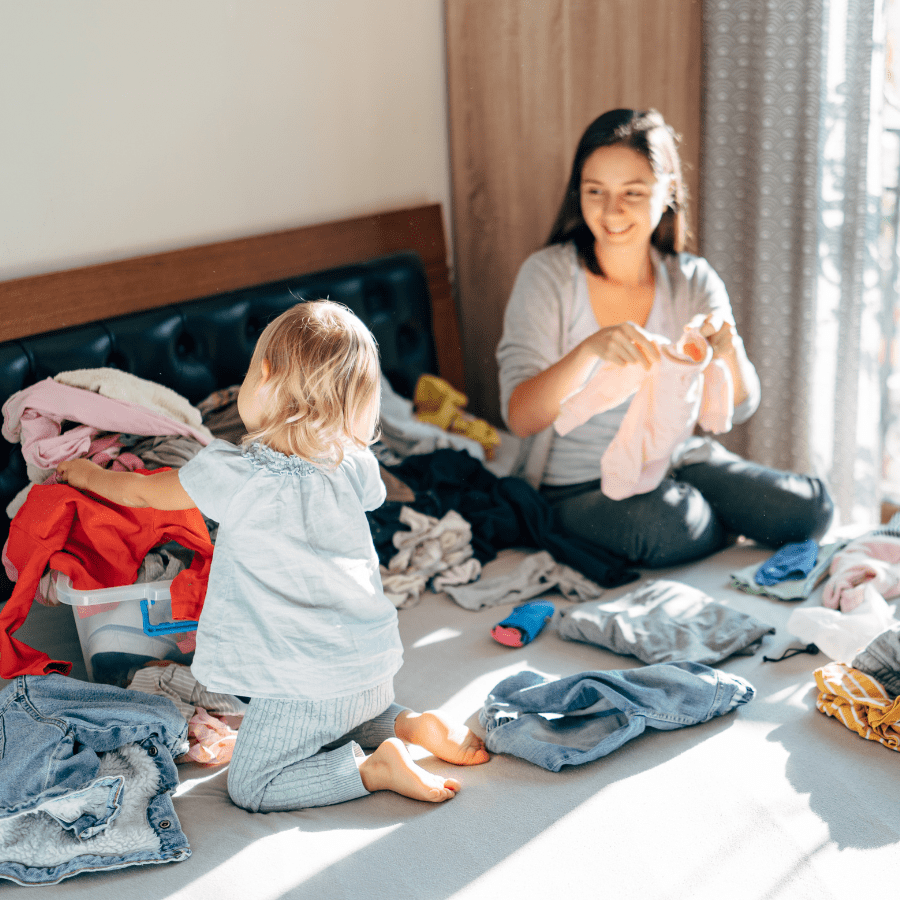
Cleaning can be a fun family affair, promoting teamwork and teaching valuable life skills. Involving everyone in household chores fosters a sense of responsibility and contributes to a cleaner home. To make cleaning a family activity, designate specific tasks for each member, creating a sense of ownership and cooperation. Set aside dedicated chore time where everyone pitches in to tackle different areas. By turning cleaning into a shared routine, families bond while maintaining a tidy living space.
Addressing Common Cleaning Challenges
Dealing with resistance from kids and keeping them motivated over time are common cleaning challenges for parents. It’s essential to maintain a positive approach and involve children in decision-making processes concerning chores. Creating a sense of ownership by allowing them to choose tasks can increase their engagement. Implementing a reward system or turning cleaning into a game can also help overcome resistance and sustain their interest in maintaining a clean environment. Here is another blog that gives some great reward ideas for kids that aren’t just candy. By addressing these challenges creatively and consistently, parents can foster good habits in their children for the long term.
Dealing with Resistance from Kids
Dealing with resistance from kids can be challenging but essential. To overcome this, involve them in the process. Make cleaning a fun activity by turning tasks into games or rewarding their efforts. Establish a cleaning schedule that suits everyone, ensuring they understand the importance of cleanliness. Maintain a positive attitude and communicate openly about the tasks. Address their concerns and encourage teamwork to create a sense of accomplishment.
Keeping Kids Motivated Over Time
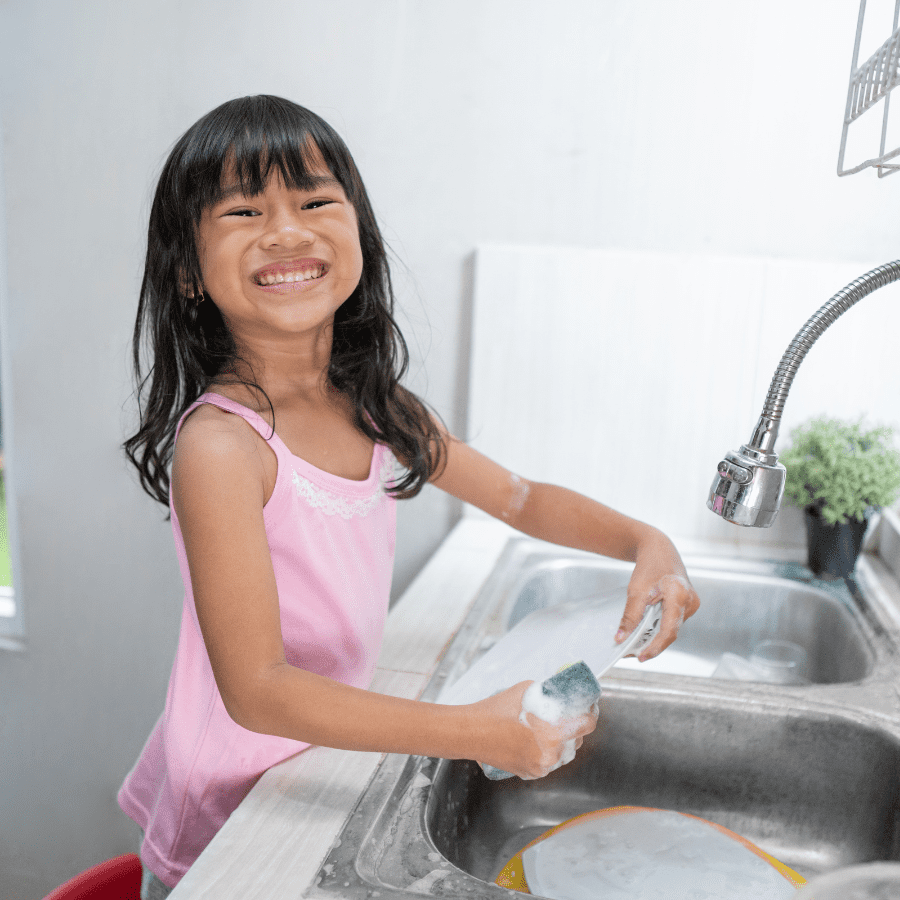
Consistency is key when it comes to keeping kids motivated over time. Establish a routine that incorporates achievable tasks and gradually increase the difficulty. Encourage their progress and celebrate small victories to maintain their interest. Introducing variety in chores and allowing them choices can make cleaning more engaging. Additionally, consider setting up a reward system to acknowledge their ongoing efforts. By making cleaning a positive and interactive experience, kids are more likely to stay motivated in the long run.
Conclusion
In conclusion, involving children in household chores not only teaches responsibility but also fosters valuable life skills. By making cleaning fun through creative chore charts and engaging games, you can motivate kids to participate eagerly. Communicating the importance of cleanliness and establishing a routine can create a positive attitude towards cleaning. Remember, age-appropriate tasks and meaningful rewards play a crucial role in sustaining their interest. Encouraging a collaborative and enjoyable cleaning environment helps instill good habits that can benefit them in the long run. So, get started on this journey of making chores exciting and empowering for your kids!
As always, with life constantly moving, if you need support in your cleaning routine, reach out to Better Life Maids. We are here to help you spend more time doing what you love. Let us tackle the cleaning so you can just come home to a clean house.
Frequently Asked Questions
How young can children start doing chores?
Children as young as 2 or 3 years old can start with simple chores like putting away toys or feeding pets. Tasks should match their abilities and be supervised. Introducing chores early fosters responsibility and life skills.
What are some effective rewards for kids who complete their chores?
Offering rewards like a special outing, new toys, creative supplies, or a small allowance can motivate kids to complete chores. Praise and recognition for their efforts are also effective incentives. Tailoring rewards to suit your child’s preferences can make the cleaning tasks more enjoyable for them.
How can I make cleaning fun for kids who dislike it?
Introduce cleaning as a game with rewards. Turn chores into a competition or incorporate music. Use colorful charts and involve them in decision-making. Making cleaning enjoyable fosters positive habits.